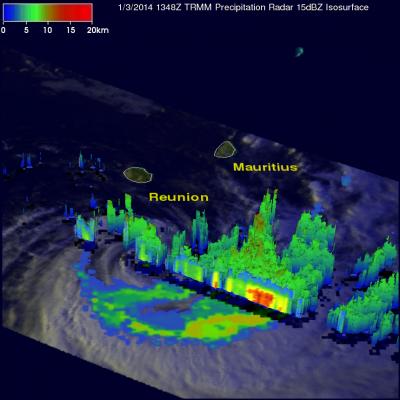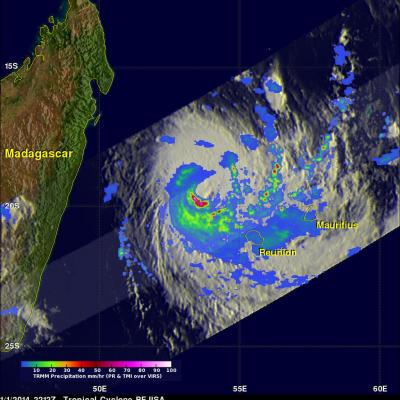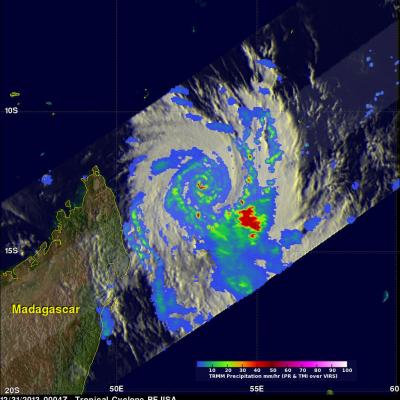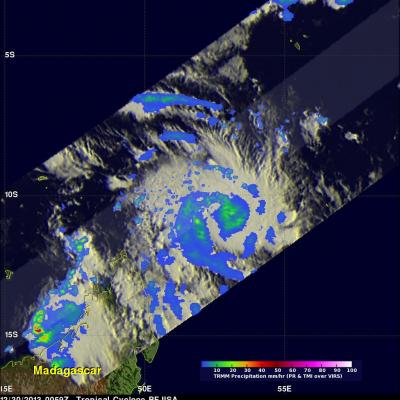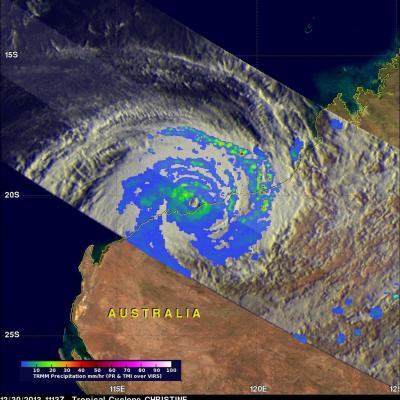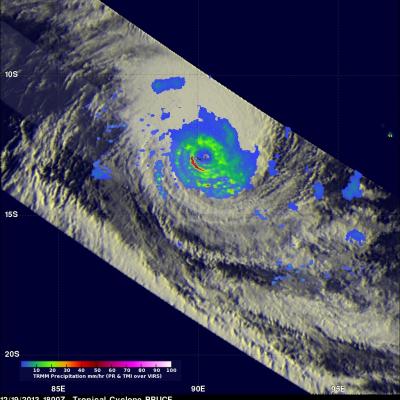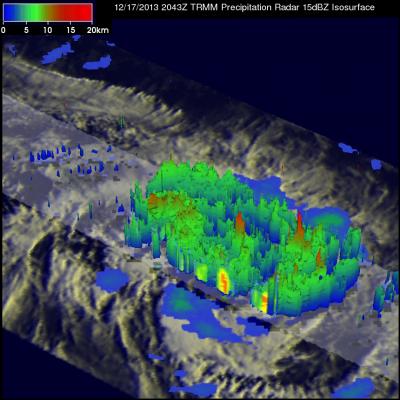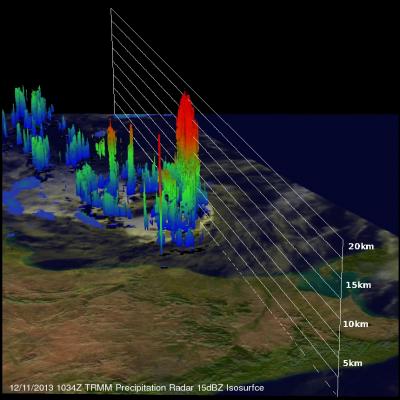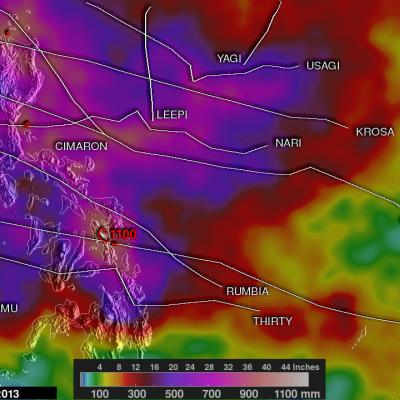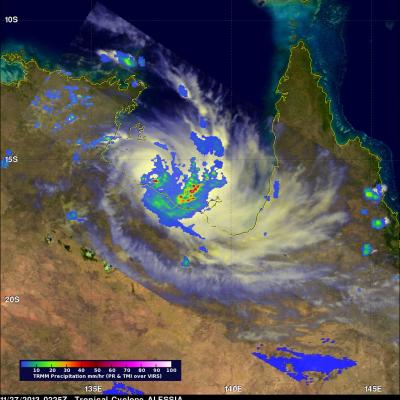Reunion Island Hit Hard By Tropical Cyclone Bejisa
Bejisa's eye passed very close to the West of the French island of Reunion yesterday when maximum sustained winds were estimated to be 105 kts (~121 mph). Bejisa spawned wave heights of 8 meters (~26 feet), caused several serious injuries and extensive power outages. The TRMM satellite had a daytime view of Bejisa today at 1348 UTC after the tropical cyclone's sustained wind speeds had decreased to less than 60kts (~69 mph). Bejisa's past positions are shown overlaid in red on a rainfall analysis made from TRMM Microwave Imager (TMI) and Precipitation Radar (PR) data collected with this pass


